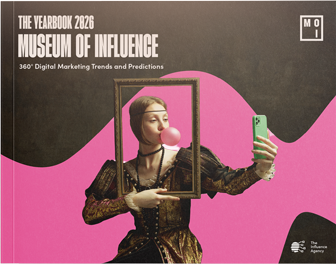Featured image:
Image alternative text:
AI isn’t just another tool in the marketer’s kit. It’s the filter that makes content feel personal, timely, and worth stopping for. When used strategically, it turns generic messaging into meaningful connections, content that resonates because it feels built for the person on the other side of the screen.
From persona to outcome: AI-Driven content marketing
In content marketing, personas used to be static, frozen snapshots of age, income, and interests. Today, AI turns them into living maps that evolve in real time. Every search, scroll, and click becomes a signal, allowing marketers to see not just who their audience is, but what they’re likely to do next.
AI tools don’t just sharpen audience profiles, they fuel strategy. Machine learning uncovers behavioral patterns that guide content formats. Natural language processing keeps messaging aligned with brand voice while still adapting to audience tone. The result is content that describes an audience and that anticipates their needs. This drives them toward action.
The AI advantage
- Create detailed audience personas enhanced by AI insights for more accurate targeting.
- Leverage AI tools for predictive content performance, ensuring campaigns focus on high-impact content ideas.
- Track the journey from persona creation to final outcomes across marketing campaigns, making adjustments in real time.
AI-driven content creation links personas to measurable business outcomes, aligning communication with results to transform insights into impact.
The personalization imperative: How AI surfaces content
Personalization is no longer a perk; it’s the price of entry. In feeds where relevance decides visibility, AI is what ensures your message lands with the right audience at the right moment.
By reading behavioral cues across platforms, AI identifies what people like and what will hold their attention next. This real-time intelligence turns segmentation into something fluid: content that flexes between formats, from a TikTok clip to a blog deep dive, without losing consistency.
The real advantage is scale. AI keeps messaging sharp and on-brand, while adapting language, format, and timing for each audience. The result isn’t more content; it’s smarter content, personalized storytelling that cuts through the noise and drives engagement where it matters most.
Practical applications
- Real-time analysis for precise audience segmentation to target high-value groups.
- Tailored messaging across platforms to maintain campaign relevance.
- Case studies demonstrate AI-driven improvements in click-through rates and engagement in optimized campaigns.
Beyond distribution: How AI scores, segments, and steers
AI doesn’t just push content out; it learns from how audiences respond. By scoring engagement, clicks, sentiment, and relevance, AI pinpoints what’s working and what’s falling flat. That intelligence fuels real-time adjustments, refining both targeting and format so campaigns stay relevant in fast-moving feeds.
Adaptive strategies go further, reshaping audience segments on the fly and steering content toward the people most likely to act. It’s a shift from static planning to living campaigns, where every interaction feeds back into smarter decisions.
The result is a feedback loop where creation and analysis work in sync. Guesswork gives way to insight, and every asset, whether a short-form video, a newsletter, or a social ad, pulls its weight in driving outcomes.
SEO meets sentiment analysis in an AI landscape
Search engine optimization has shifted from a checklist of keywords to a balance of data and emotion. Ranking high is no longer enough. Content must also resonate with the intent and feeling behind the search. AI makes that possible by pairing technical precision with sentiment analysis, uncovering the emotions that drive people to click, share, or buy.
By scanning reviews, conversations, and queries, AI identifies not just what audiences are asking, but how they feel when asking it. Long-tail keywords become layered with emotional context, turning search terms into stories that speak directly to intent.
The payoff is more than traffic. Campaigns tuned for emotional relevance earn trust, strengthen authenticity, and position brands with lasting credibility in competitive spaces. In an AI-driven feed, the winners are optimized for algorithms and they’re aligned with human behavior.
For Digital Only
Key takeaways
- Integrate long-tail keywords identified through AI sentiment analysis for more precise targeting.
- Optimize campaigns for emotional relevance and positioning so they resonate with the target audience.
- Drive trust and authenticity in search rankings by blending technical SEO with emotional insight.
By merging SEO best practices with AI-driven sentiment analysis, marketers can produce relevant content that not only ranks but also builds meaningful connections with their audience.
AI and Content Marketing FAQs
How does AI improve content marketing ROI?
AI improves ROI by automating repetitive tasks and predicting which content will perform best, allowing teams to focus on strategy and creativity.
What’s the difference between AI-powered personalization and traditional targeting?
Traditional targeting sends the same message to broad segments, while AI personalization adapts content dynamically based on behavior, preferences, and sentiment.
Which AI tools are best for content scoring and optimization?
Tools like Clearscope, SurferSEO, and HubSpot’s AI tools help measure performance, optimize content, and maintain a consistent brand voice.
Unleash the Power of AI in Your Content Marketing
AI is no longer just an optional tool for content marketers, it is a competitive advantage that boosts strategy, efficiency, and results. By integrating AI-powered tools, marketers can quickly generate social media posts, blog content, video scripts, and visual content while maintaining a consistent brand voice across channels. Machine learning and predictive analytics help identify which topics, formats, and messaging resonate most, optimize resources, and reduce time-consuming tasks, freeing human writers to focus on creativity and storytelling. Aligning marketing goals with AI solutions ensures campaigns remain relevant, personalized, and emotionally resonant, delivering measurable outcomes and keeping brands competitive across multiple platforms.

